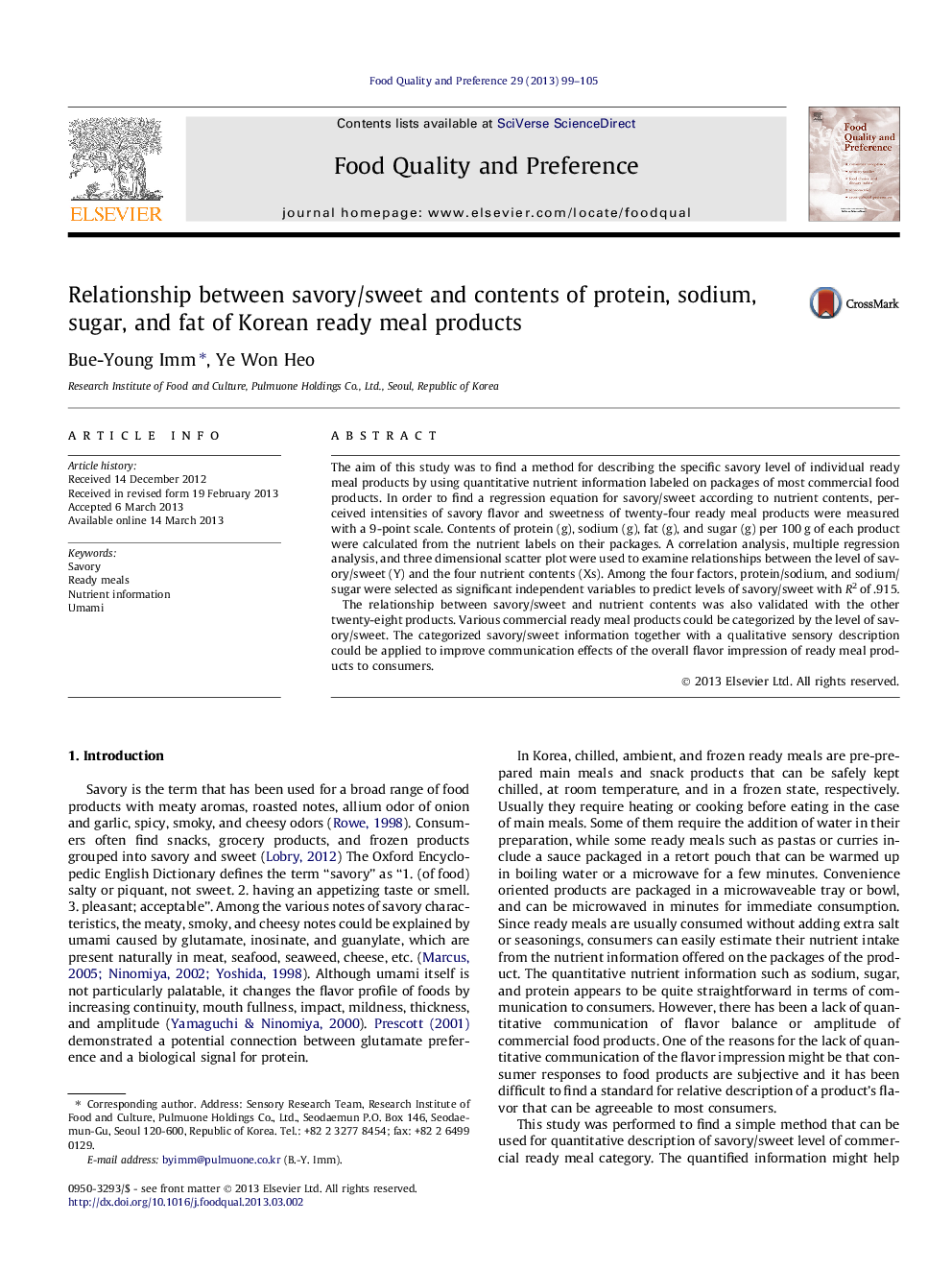| Article ID | Journal | Published Year | Pages | File Type |
|---|---|---|---|---|
| 4317447 | Food Quality and Preference | 2013 | 7 Pages |
•Savory/sweet of ready meals was examined with protein, sodium, and sugar contents.•Savory level of the ready meal products increased as the protein content increased.•A regression model among savory/sweet and nutrient contents was suggested.
The aim of this study was to find a method for describing the specific savory level of individual ready meal products by using quantitative nutrient information labeled on packages of most commercial food products. In order to find a regression equation for savory/sweet according to nutrient contents, perceived intensities of savory flavor and sweetness of twenty-four ready meal products were measured with a 9-point scale. Contents of protein (g), sodium (g), fat (g), and sugar (g) per 100 g of each product were calculated from the nutrient labels on their packages. A correlation analysis, multiple regression analysis, and three dimensional scatter plot were used to examine relationships between the level of savory/sweet (Y) and the four nutrient contents (Xs). Among the four factors, protein/sodium, and sodium/sugar were selected as significant independent variables to predict levels of savory/sweet with R2 of .915.The relationship between savory/sweet and nutrient contents was also validated with the other twenty-eight products. Various commercial ready meal products could be categorized by the level of savory/sweet. The categorized savory/sweet information together with a qualitative sensory description could be applied to improve communication effects of the overall flavor impression of ready meal products to consumers.
